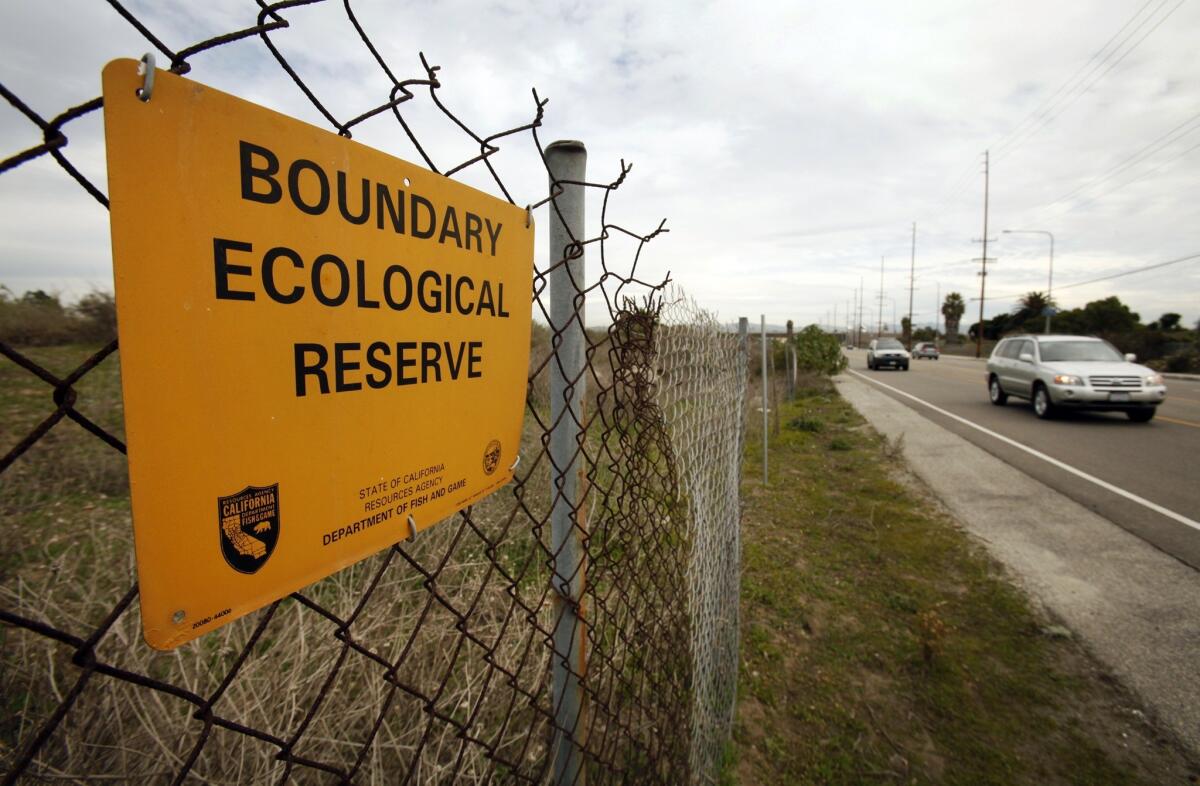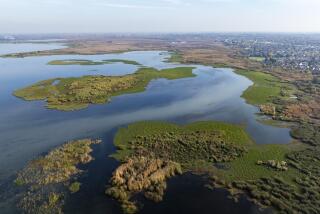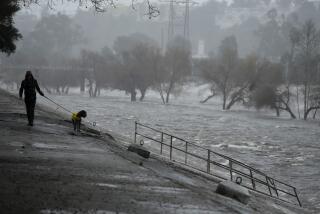Op-Ed: Bickering environmental groups are holding L.A.’s last surviving tidal wetland hostage

Los Angeles only has one coastal tidal wetland left to save. And environmentalists can’t stop fighting each other over it.
The Ballona wetlands, at the end of Ballona Creek in Playa del Rey, is the second biggest natural open space in the city of Los Angeles after Griffith Park. It represents the last remaining 5% of tidal wetlands that once existed in Los Angeles. The rest were dredged and filled to build areas like Marina del Rey, the construction of which buried most of the wetlands at Ballona under yards of dirt, decimating crucial native wildlife habitats and allowing invasive species to take root.
In late December, the state of California, which owns the 600-acre site, issued a final plan to restore the tidal wetlands by using bulldozers to reengineer the landscape and then planting native plants, a method used in other successful coastal restoration efforts. The plan would reconnect wetlands to the daily rise and fall of tides and create 10 miles of elevated walking and bicycling paths atop new flood control berms, using the 3 million cubic yards of earth that has to be moved.
It was the culmination of decades of work to save and restore the wetland. And it created an immediate uproar.
Instead of working together to protect this scruffy but important patch of wetland and weeds, local environmentalists have taken the site hostage in an ideological battle that is much bigger than this parcel of land.
Ideas and commentary on building a livable, sustainable Los Angeles.
In one camp are the eco-engineers, who say we must proactively manage and restore nature. In the other camp are those who say humans have done enough damage already. We should leave nature well enough alone. They’ve been battling for decades over Ballona.
Naturally, eco-engineers cheered the state’s latest Ballona plan, while leave-nature-alone types announced they would challenge the plan in court — which will almost certainly tie up any action at Ballona for years.
I have friends in both camps, and I respect their seemingly irresolvable philosophical differences. Even in my own home, my partner and I bicker about what should happen at Ballona. She distrusts bulldozers, especially mucking around in sensitive habitat for the birds and other living creatures she loves. I think bulldozers will be needed in many places to undo the massive damage people have done and prepare this ecosystem for a more resilient future.
As our quarrel illustrates, this isn’t just about our views of the proper relationship between humans and nature in the 21st century. It is also fundamentally about trust.
Thankfully, there is a potential solution to this impasse. Perhaps we could call it “trust but verify.”
The state report on Ballona lays out detailed plans for monitoring and protecting sensitive species that currently use the deteriorated wetlands — including the Belding’s savannah sparrow, Crotch’s bumble bee and silvery legless lizards — to make sure they are not harmed by earth-moving and other restoration activities.
Both environmental camps in the battle of Ballona are well-stocked with talented and passionate scientists, naturalists and nature lovers. If they agree to a ceasefire, they can each monitor the restoration work as it progresses. If either side observes unanticipated harm to habitat or species, they can blow the whistle to halt operations. If they don’t trust the outcome, then they can go to court.
After decades of trying to find a solution, years more delays aren’t a responsible option. If the area continues to be cut off from the lifeblood of the ocean tides, the existing tidal wetland habitat will degrade. Weeds will continue to inexorably replace native habitat. Everything that makes the area unique and special will eventually be lost.
Then there’s the “opportunity cost” of doing nothing. We’ll lose the benefits of species and habitat improvements, but also the chance for people to be close to nature, as well as the economic benefits of visitors — especially birders — who will increasingly flock to Ballona as the wetlands come back. The state of California has made a financial commitment to restoring Ballona. We need to take advantage of that offer while the state’s economy is still thriving, and start moving carefully in the right direction.
I have little doubt that my friends on both sides of this war will tell me I’m naïve. They are ready to go to the ramparts over ideas, before a single shovel of dirt is moved.
But if they heard from the 2.8 million Angelenos who live within an easy recreational drive from Ballona, more than half from disadvantaged households—including 105,797 people who live within easy bicycling distance and 9,089 who live within easy walking distance — that it’s time to end the battle and find common ground, perhaps they’d be willing to give peace a chance.
The longer we fight over Ballona, the longer it will be before anyone, including nonhuman Angelenos, enjoys the benefits of restoring this severely degraded landscape.
Jon Christensen is an adjunct assistant professor in the Institute of the Environment and Sustainablity at UCLA and one of the 105,797 people who live within easy bicycling distance of Ballona.
More to Read
A cure for the common opinion
Get thought-provoking perspectives with our weekly newsletter.
You may occasionally receive promotional content from the Los Angeles Times.







